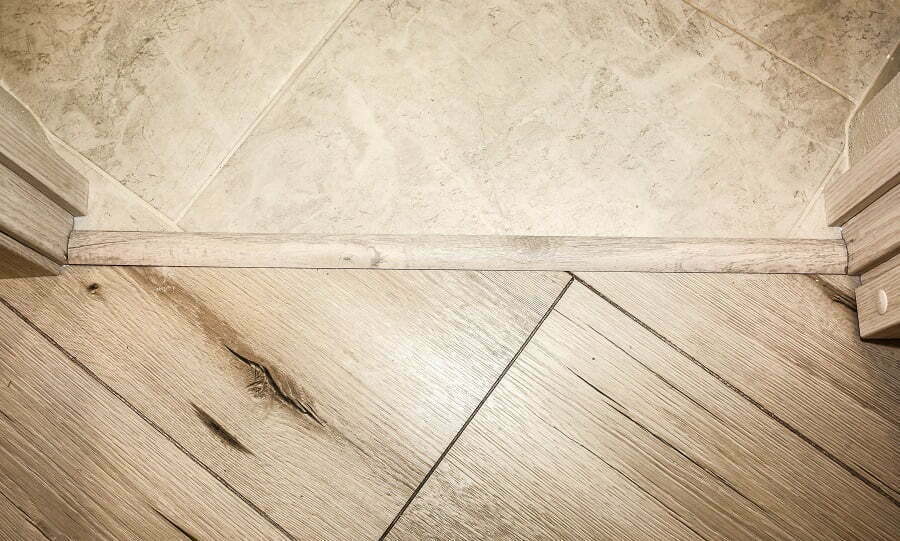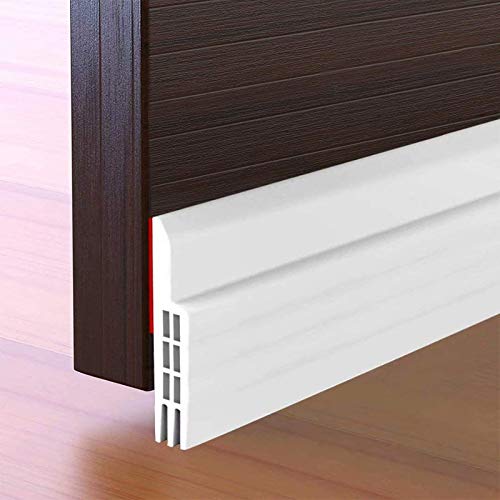Last updated on
The main difference between the door sweep and the threshold is that the door sweep is attached to the bottom of the door and the threshold is part of the door frame. Otherwise, they serve mostly the same purpose.
Usually, the door sweep is installed when the threshold is not available. However, it is possible to have both of them simultaneously if extra insulation is needed. The door sweep can provide a seal that closes the gap at the bottom of the door where the threshold lacks.
And at the same time, most of us agree that the door sweep doesn’t look attractive. No matter how you look at it, an attachment to the door is a decor eyesore. On the other hand, the threshold has a built-in look that doesn’t take away from the decor value.
The Threshold

A threshold is a point at which a door can be opened and closed without causing damage to the door or its frame. The threshold is usually made of wood or aluminum, and it marks the intersection between two floors that meet at the doorway. An aluminum threshold is typically used in exterior doors.
Thresholds not only keep out drafts, dirt, water, and insects, but they can also improve the appearance of your entrance. Thus you can see the threshold as an alternative to a door sweep.
The Door Sweep

The door sweep is an addition to the bottoms of doors that can stop drafts and provide insulation. It’s basically a strip usually made from wood, plastic, metal, or rubber. A door sweep has two parts: a base and a cover. The base is attached to the bottom edge of the door, while the cover is the part that covers the gap.
A brush door sweep sometimes looks like a small broom attached to the bottom edge of the door. It is designed to remove dirt and debris that accumulate at the base of the door when it is closed. A flat door sweep is available in different sizes and shapes to fit most doors. They are usually made of plastic, but some models are made of wood.
Another popular type of door sweep is a weatherstrip that runs along the bottom edge of the door. Weatherstrips are often used as a replacement for a door sweep because they don’t require drilling into the door frame. They can be U-shaped door sweeps that provide even better insulation. On the other hand, they can only be installed on wood doors.
The most common use for a door sweep is stopping drafts, providing insulation, soundproofing, and increasing energy efficiency. Adhesive door sweeps make it easy to install them, and they can be used as a temporary solution (for example, seasonally.)
Door Sweep vs. Threshold
Both sweeps and thresholds close the gap under the door, thus providing insulation. The main difference between the door sweep and threshold is that the former is attached to the door while the latter is a part of the door frame.
As such door sweep can potentially provide better insulation than the threshold. On the other hand, the threshold provides better decor value than an attachment to the bottom of a door that may look weird.
Benefits of a Door Sweep
- Provides insulation.
- Keeps out dust, dirt, moisture, and insects.
- Improves the appearance of the entrance.
- Makes cleaning easier.
- Removes any accumulation of dirt and debris at the base of the doorway.
- Easy to install.
- Available in various designs.
- Can be easily removed if necessary.
- Low cost.
- No need for drilling into the wall.
- May reduce noise by preventing air leakage.
- Does not require painting.
- Can be used as a temporary solution until you get new door.
- Can be used with both wooden and steel doors.
Drawbacks of a Door Sweep
- Not suitable for all types of doors.
- May cause problems if there is a lot of accumulated dirt and debris at the bottom of the door.
- May increase the risk of tripping over the threshold.
- May have sharp edges.
- May interfere with the operation of automatic door.
Benefits of a Threshold
- Prevents air leakage.
- Keeps outside elements out.
- Creates a more inviting entryway.
- Reduces noise.
- Improves the appearance.
- Looks great.
- Easier to clean.
- More durable.
- No need for drilling.
- No need for painting.
- May prevent injury due to slipping.
- May reduce wear and tear on the door.
- Can be used with either wooden or steel doors.
Drawbacks of a Threshold
- Requires installation by professional.
- May interfere with the opening of the door.
- May obstruct the view through the door.
- May cause tripping hazard.
- May collect pollen and dust.
- May become damaged during use.
- May not work well in areas where the temperature changes frequently.
- May not work well with certain types of doors.
The Verdict
There is no doubt that a door sweep is a much better choice than a threshold. However, it should be noted that they do not always perform equally. If your door does not allow for a threshold, then installing a door sweep might not be a good idea.
FAQ
According to the National Association of Home Builders (NAHB), the recommended distance from the floor to the top of the door should be 1/2 inch. This will ensure that the threshold doesn’t impede the door’s opening.
When selecting a door sweep, make sure that you choose one which fits your needs. For example, if you live in a cold climate, you would want to select a door sweep with thicker material to keep heat inside. If you live in a hot climate, you would prefer a lighter-weighted door sweep.
Recap





